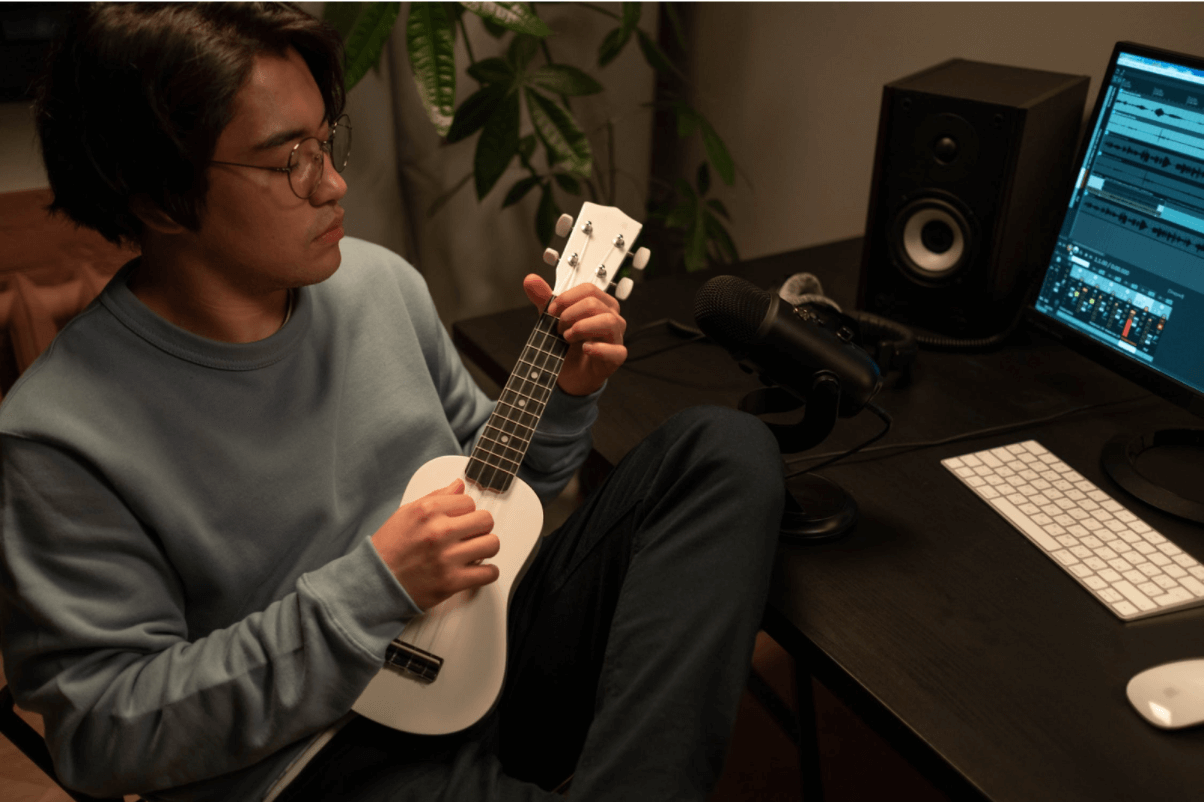There are a lot of reasons why you might want to set up your own home recording studio. Maybe you’re an aspiring musician who wants to record your own music. Maybe you’re a filmmaker who wants to record voiceovers or video footage. Or maybe you just want a place to record your podcast or radio show.
No matter what your reason, setting up a home recording studio can be a great way to save money and get the most out of your creative endeavors. But it can also be tricky, especially if you don’t know where to start.
https://pixabay.com/photos/home-studio-recording-2363374/
Studio Monitors
The first step is to get a good set of studio monitors. These are speakers that are specifically designed for audio production and will give you the clearest, most accurate sound possible. If you’re on a budget, there are some great options available for under $500, you just need to find out what works best for you – the price doesn’t always reflect quality, so be sure to do your homework on this one! Read experts’ guides, reviews, comparisons and ask around before making a decision.
Once you have your monitors, be sure to set them up in an appropriate place in your room – usually against a wall or in a corner to create a “sweet spot.” This is important because it will help you to hear the sound more clearly and make better mixing decisions.
Computer
The heart of any home recording studio is your computer. To record and produce audio, you need a computer with a good enough processor, adequate RAM, and a sound card. You don’t need the most expensive or powerful computer on the market, but you do need something that can handle basic audio production tasks. If you already have a desktop or laptop that you’re using for other things, it might be good enough to get started.
Alongside the computer comes an audio interface which is a piece of hardware that allows you to connect your microphone to your computer. It converts the analog signal of your microphone into a digital signal that can be processed by your computer.
Again, there are a lot of great options available, even if you’re on a tight budget. Just be sure to do your research and find an audio interface that is compatible with your computer and has the features you need.
DAW
The next piece of software you need is called a DAW, or digital audio workstation. This is the software you will use to actually record, edit and produce your audio. There are a lot of different options available, and the one you choose will depend on your personal preferences and needs.
For example, some of the most popular DAWs include Pro Tools, Logic Pro, Ableton Live, and FL Studio. If you’re just starting, it might be a good idea to try out a few different ones to see what you like best. You can find and try these programs for free before you commit to buying anything.
MIDI Keyboard
If you want to record music, one of the best ways to do it is with a MIDI keyboard. This is a type of keyboard that allows you to input musical notes into your computer, which can then be used in your DAW. MIDI keyboards come in all different shapes and sizes, and you can find some great ones for under $100.
However, you can also use your regular keyboard or even a guitar to input notes into your computer. This is called “playing in” and can be a great way to create music without spending any money on extra equipment.
Microphone
Last but not least, you need a microphone! This will be used to record vocals, instruments, and other audio sources. Microphones come in all different shapes and sizes, and the one you choose will depend on your needs and budget.
If you’re just starting, a basic microphone like the Shure SM58 will be more than enough. However, if you need a higher quality microphone for professional recordings, there are a lot of great options available at all different price points.
Recording Space
The final piece of the puzzle is finding a good recording space. This can be anything from a spare room in your house to a closet or even under the stairs. The important thing is that the space is large enough for you and your equipment and that it can be soundproofed to some degree.
If you don’t have a lot of space, or if you can’t soundproof your recording area, you can always use a portable isolation booth. These are handy little devices that go around your microphone and help to reduce outside noise.

With these simple tips, you should be able to put together a great home recording studio, even on a budget. Just remember to take your time, do your research and invest in quality equipment when you can. With a little bit of effort, you’ll be able to create professional-sounding recordings from the comfort of your own home.




